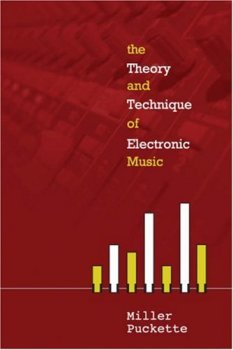Theory and Techniques of Electronic Music

English | 2005 | 304 Pages | PDF | 1.83 MB
This is the first book to develop both the theory and the practice of synthesizing musical sounds using computers.
Each chapter starts with a theoretical description of one technique or problem area and ends with a series of working examples (over 100 in all), covering a wide range of applications.
A unifying approach is taken throughout; chapter two, for example, treats both sampling and wavetable synthesis as special cases of one underlying technique. Although the theory is presented quantitatively, the mathematics used goes no further than trigonometry and complex numbers. The examples and supported software along with a machine-readable version of the text are available on the web and maintained by a large online community. The Theory and Techniques of Electronic Music is valuable both as a textbook and as professional reading for electronic musicians and computer music researchers.
